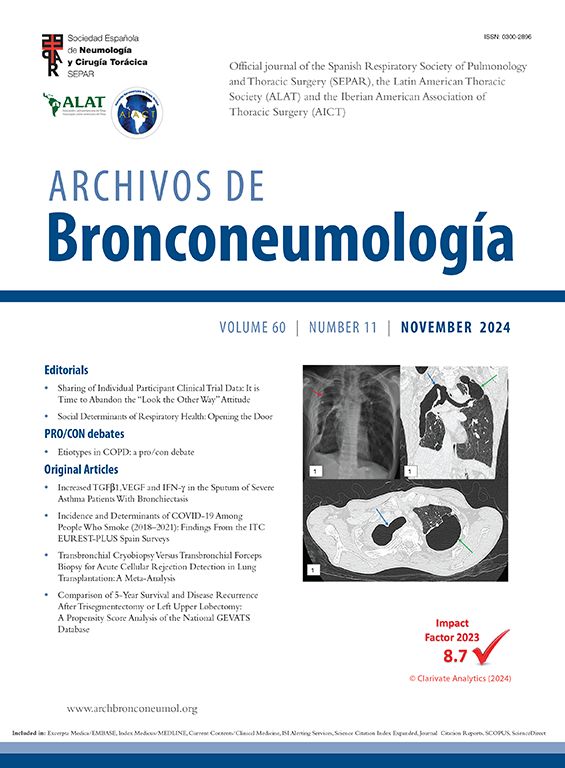La inflamación es una de las primeras respuestas que presenta el sistema inmunitario del organismo para hacer frente a cualquier tipo de agresión. La lesión que produce la inhalación del humo del tabaco desarrolla una respuesta inflamatoria que inicialmente se desencadena de manera innata, como sucede en cualquier tipo de agresión. Posteriormente se ve estimulada por la liberación de diferentes factores químicos que potencian la respuesta inflamatoria y, finalmente, dependiendo del tipo de agresión, llega a activar la inmunidad adquirida que, mediada por la participación de los linfocitos, sirve para establecer una barrera física contra la propagación de la lesión y para promover la recuperación del tejido pulmonar dañado. Sin embargo, el equilibrio entre inflamación y reparación no siempre se mantiene, como sucede en el caso de la enfermedad pulmonar obstructiva crónica (EPOC), donde aparecen marcados cambios en la arquitectura de las vías aéreas, espacios alveolares y arterias pulmonares, que suponen el trasfondo estructural de los cambios funcionales característicos de esta enfermedad.
Siendo la EPOC una enfermedad básicamente pulmonar, disponemos de datos acerca de la existencia de una inflamación asociada a nivel sistémico. Los orígenes de esta inflamación sistémica no están aclarados, hay información acerca de un origen común directo del humo del tabaco a todos los niveles y datos acerca de una inflamación primaria pulmonar que, por extensión, afecta secundariamente a nivel sistémico. En la presente revisión se describen los principales mecanismos implicados en el proceso inflamatorio existente a nivel pulmonar y a nivel sistémico en la EPOC.
Inflammation is one of the first immune system responses to any type of aggression. As with any type of aggression, the lesion produced by inhalation of tobacco smoke prompts an innate inflammatory response. Subsequently, this lesion is stimulated by the release of various chemical factors that enhance the inflammatory response and, finally — depending on the type of aggression — acquired immunity is activated, which, mediated by lymphocyte participation, serves to establish a physical barrier against the propagation of the lesion and to aid repair of the damaged pulmonary tissue. However, the balance between inflammation and repair is not always maintained, as is the case in chronic obstructive pulmonary disease (COPD), in which marked changes appear in the architecture of the airways, alveolar spaces and pulmonary arteries, forming the structural background of the functional changes characteristic of this disease.
COPD is basically a pulmonary disease but data are available on the existence of associated systemic inflammation. The origins of this systemic inflammation are unclear: some information indicates that tobacco smoke is a direct origin common to local and systemic inflammation, while other data point to primary pulmonary inflammation that secondarily produces systemic involvement. The present review describes the main mechanisms involved in both pulmonary and systemic inflammation in COPD.










